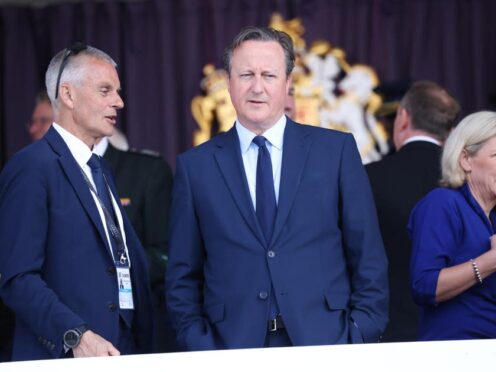
Foreign Secretary Lord David Cameron has been the victim of hoax a video call and messages from someone claiming to be the former president of Ukraine, it has been revealed.
In order to stave off any attempts to manipulate video footage of Lord Cameron from the communications, the Government has made public what happened.
A statement from the Foreign Office said a “number of text messages were exchanged followed by a brief video call between the Foreign Secretary and someone purporting to be Petro Poroshenko, former president of Ukraine”.
Mr Poroshenko served as Ukrainian president between 2014 and 2019, and has remained a prominent figure in the country since leaving office.
The statement added: “Whilst the video call clearly appeared to be with Mr Poroshenko, following the conversation the Foreign Secretary became suspicious.
“Contact details for others were requested and, given his concerns, the Foreign Secretary stopped responding.
“The department has now investigated and confirmed that it was not genuine and that the messages and video call were a hoax.
“We are making this public in case the video of the Foreign Secretary is manipulated and subsequently used, and to ensure that others are aware of this risk.”

Explaining why the statement had been released, the Foreign Office said manipulation of the “information environment is becoming ever more present”.
“Whilst regretting his mistake, the Foreign Secretary thinks it important to call out this behaviour and increase efforts to counter the use of misinformation,” it added.
Politicians have received repeated warnings in recent months about the growing threat of misinformation and disinformation, especially as artificial intelligence (AI) technology improves.
Only earlier this week, broadcasters warned that on election day, channels will not be able to warn viewers about deepfakes and misinformation.
ITN chief executive Rachel Corp warned that “we’re going to be flooded” with AI-created propaganda in the run-up to polling day.

Enjoy the convenience of having The Sunday Post delivered as a digital ePaper straight to your smartphone, tablet or computer.
Subscribe for only £5.49 a month and enjoy all the benefits of the printed paper as a digital replica.
Subscribe